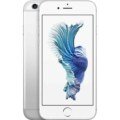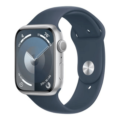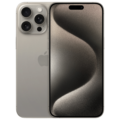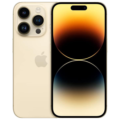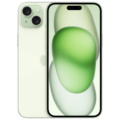- Home
- Apple Devices
- Apple iPhone
- Apple iPhone 7 Spec: A Detailed Overview
Apple iPhone 7 Spec: A Detailed Overview






SPECIFICATIONS
General
| Status | Available |
| Announced |
2016, September |
| Released | 16 September, 2025 |
| Model | iPhone 7 (A1660, A1661, A1778, A1784) |
| Price Apple iPhone Price in USA, UK, Canada, Australia, India, Pakistan, China, Japan and Europe | $499 - $549 || £599 - £799 || 78999 PKR || ₹ 36,499 - ₹ 45,999 |
Network
| Technology |
GSM / CDMA / HSPA / EVDO / LTE |
| 2G Network |
GSM 850 / 900 / 1800 / 1900 - A1660, A1778 CDMA 800 / 1900 / 2100 - A1660 |
| 3G Network |
HSDPA 850 / 900 / 1700(AWS) / 1900 / 2100 - A1660, A1778 CDMA2000 1xEV-DO & TD-SCDMA - A1660 |
| 4G Network |
LTE band 1(2100), 2(1900), 3(1800), 4(1700/2100), 5(850), 7(2600), 8(900), 12(700), 13(700), 17(700), 18(800), 19(800), 20(800), 25(1900), 26(850), 27(800), 28(700), 29(700), 30(2300), 38(2600), 39(1900), 40(2300), 41(2500) - A1660, A1778 |
| Speed | HSPA 42.2/5.76 Mbps, LTE-A (3CA) Cat9 450/50 Mbps, EV-DO Rev.A 3.1 Mbps |
| GPRS GPRS (General Packet Radio Service) is a packet oriented mobile data service on the 2G and 3G cellular communication system's global system for mobile communications (GSM), Generally, GPRS is used for the purpose of wireless data transfer, such as sharing pictures and videos or browsing the Internet via a mobile phone connection. | |
| EDGE EDGE (Enhanced Data GSM Environment) is a wireless network technology generally considered the next step in the 2G network offers data transfer rates up to four times faster than ordinary GSM networks, Generally, EDGE is used for the purpose of wireless data transfer, such as sharing pictures and videos or browsing the Internet via a mobile phone connection. |
Body
| Dimensions | 138.3 x 67.1 x 7.1 mm (5.44 x 2.64 x 0.28 in) |
| Weight | 138 g (4.87 oz) |
| Colors | Jet Black, Black, Silver, Gold, Rose Gold |
| SIM SIM (Subscriber Identity Module) is a small card that contains mobile network subscriber's account information. This allows the phone using the card to attach to a mobile network. The SIM card is most commonly associated with GSM and UMTS mobile networks. Moving a SIM card from one phone to another allows a subscriber to switch mobile phones without having to contact their mobile network carrier. SIM cards can also be used by a phone to store limited amounts of data, such as phone numbers and text messages. | Nano SIM |
Body
| Dimensions | 138.3 x 67.1 x 7.1 mm (5.44 x 2.64 x 0.28 in) |
| Weight | 138 g (4.87 oz) |
| Colors | Jet Black, Black, Silver, Gold, Rose Gold |
| SIM SIM (Subscriber Identity Module) is a small card that contains mobile network subscriber's account information. This allows the phone using the card to attach to a mobile network. The SIM card is most commonly associated with GSM and UMTS mobile networks. Moving a SIM card from one phone to another allows a subscriber to switch mobile phones without having to contact their mobile network carrier. SIM cards can also be used by a phone to store limited amounts of data, such as phone numbers and text messages. | Nano SIM |
Display
| Display Type Display Technology => A number of display technologies and types used in mobile phones => TFT (Thin Film Transistor), IPS (In-Place Switching), OLED (Organic Light Emitting Diode), AMOLED (Active-Matrix Organic Light-Emitting Diode), Super AMOLED (an even advanced version of AMOLED), Resistive Touchscreen (Resistive touchscreens contain two layer of conductive material with a very small gap between them which acts as a resistance), Capacitive Touchsceen (Capacitive touchscreen technology consists of a layer of glass coated with a transparent conductor) | LED-backlit IPS LCD, capacitive touchscreen, 16M colors |
| Size | 4.7 inches (~65.6% screen-to-body ratio) |
| Display Colors Display Colors is refers to the number of different shades of colors that the screen is capable of displaying => 64K colors, 256K colors and 16 million colors, Obviously 16M is highest available range of colors and better than others. | 16M colors |
| Resolution | 750 x 1334 pixels |
| Pixel Density Pixel Density (PPI) is refers to the concentration of pixels on a particular display, measured in pixels per inch (ppi). Pixel density is calculated by dividing the diagonal pixel resolution of a display by its diagonal size, higher pixel density better display quality. | 326 ppi |
| Touch Screen | Second-generation fingerprint sensor built into the Home button |
| Display Protection Display Protection => Gorilla Glass is a special alkali-aluminosilicate glass shield with exceptional damage resistance that helps protect mobile displays from scratches, drops, and bumps of everyday use, It is always better to go for a smartphone with Gorilla Glass for that added protection and peace of mind. | Ion-strengthened glass, oleophobic coating |
| Multitouch | |
| Features |
- Wide color gamut display - 3D Touch display & home button - Display Zoom |
Camera
| Primary Camera is able to capture photographs and usually videos, The most important characteristics of a camera are the resolution (measured in megapixels), lens focus type (fixed or automatic), higher megapixel cameras are known to capture higher quality photos, but not always a good measurement of the photos quality. | 12 MP, f/1.8, 28mm (wide), 1/3", PDAF, OIS |
| Video | 1080p@30fps |
| Camera Features |
Face detection, HDR, panorama Retina Flash Wide color capture for photos and Live Photos HDR for Photos |
| Selfie Camera | 7 MP, f/2.2, 32mm (standard) |
| Video | 1080p@30fps |
| Camera Features |
Face detection, HDR, panorama Retina Flash Wide color capture for photos and Live Photos HDR for Photos |
Software
| Operating System OS => Every computer system run on a base software called Operating System (OS). Operating System controls all basic operations of the computer (such as smartphone, PDAs, tablet computers and other handheld devices). The Operating System allows the user to install and run third party applications (apps), apps are used to add new functionality to the device. | iOS 10.0.1, up to iOS 13 |
| Browser (Default) | Safari |
Hardware
| Chipset Chipset is a group of integrated circuits designed to perform one or a more dedicated functions, often with real time computing constraints, Popular smartphones are equipped with more advanced embedded chipsets that can do many different tasks depending on their programming. | Apple A10 Fusion |
| CPU CPU (Central Processing Unit) mostly known as processors, CPU processes instructions in order to carry out certain functions that make your device operate properly. Processors are often described as the brain of computers, smartphones and tablets, Smartphones and tablets rely on processors to carry out their every task, Processors are an incredibly important factor in selecting any type of computing device, including your smartphone. | Quad-core 2.34 GHz (2x Hurricane + 2x Zephyr) |
| GPU GPU (Graphics Processing Unit) is a single-chip processor designed to rapidly manipulate and alter memory to accelerate the creation of images in a frame buffer intended for output to a display, This includes things such as lighting effects, object transformations, and 3D motion. | PowerVR Series7XT Plus (six-core graphics) |
| RAM (Memory) RAM (Random Access Memory) is a type of computer memory that can be accessed randomly, any byte of memory can be accessed without touching the preceding bytes that allows information to be stored and accessed quickly from random locations. RAM is the most common type of memory found in computer systems, smartphones, tablets and other electronic devices. | 2 GB |
| Internal Storage Internal Storage is a data storage space (flash memory) mostly used in smartphones, tablets and other electronic devices where operating system, apps, music, photos, videos, files and other user data Is stored. | 32GB/128GB/256GB |
| Card Slot Memory Card Slot is a special slot for inserting a memory card. Memory cards allow you to expand the phone's built-in memory, A memory card (sometimes called a flash memory card or a storage card) is a small storage medium used to store data such as text, pictures, audio, and video, for use on small, portable or remote computing devices such as mobile phones, mp3 players, digital cameras. | NO |
| Sensors Sensors are electronic components that detects and responds to some type of input from the physical environment. The specific input could be light, heat, motion, moisture, pressure and location, The output is generally a signal that is converted to use in computing systems, a location sensor, such as a GPS receiver is able to detect current location of your electronic device. |
Fingerprint (front-mounted), accelerometer, gyro, proximity, compass, barometer |
Battery
| Battery Type Battery Type => Cell phones run on various kinds of batteries depending on the manufacturer, phone size or shape and features. There are basically four types of cell phone batteries => Lithium Polymer, Lithium Ion, Nickel Metal Hydride and Nickel Cadmium. | Li-Ion (Lithium Ion) |
| Capacity Battery Capacity is a measure (typically in Amp-hr) of the charge stored by the battery, and is determined by the mass of active material contained in the battery. The battery capacity represents the maximum amount of energy that can be extracted from the battery under certain conditions. | 1960 mAh battery (7.45 Wh) |
| Placement | Non-removable |
| Wireless Charging Wireless Charging (Inductive Charging) uses an electromagnetic field to transfer energy between two objects. This is usually done with a charging station. Energy is sent through an inductive coupling to an electrical device, which can then use that energy to charge batteries or run the device. | NO |
| Fast Charging | NO |
| Standby Standby Time is the total amount of time that you can leave your is fully charged, turned on and ready to send and receive calls or data transmissions before completely discharging the battery. | Up to 10 days |
| Talk Time Talk Time is the longest time that a single battery charge will last when you are constantly talking on the phone under perfect conditions, Ambient temperature and highly dependent on the cellular network environment such as the distance to the closest cell network tower. | Up to 14 hours |
| Audio Playback | Up to 40 hours |
| Video Playback | Up to 13 hours |
| Internet Usage | Up to 12 hours (3G, LTE) || Up to 14 hours (Wifi) |
Media
| Loudspeaker | Yes, with stereo speakers |
| 3.5mm Jack | |
| FM Radio | NO |
| Features |
- Active noise cancellation with dedicated mic - Lightning to 3.5 mm headphone jack adapter incl |
Connectivity
| Bluetooth Bluetooth is a wireless communications technology for exchanging data between mobile phones, headsets, computers and other network devices over short distances without wires, Bluetooth technology was primarily designed to support simple wireless networking of personal consumer devices. | v4.2, A2DP, LE |
| Infrared Infrared connectivity is an old wireless technology used to connect two electronic devices. It uses a beam of infrared light to transmit information and so requires direct line of sight and operates only at close range. | |
| Wi-fi Wi-Fi is a popular wireless networking technology using radio waves to provide high-speed network connections that allows devices to communicate without cords or cables, Wi-Fi is increasingly becoming the preferred mode of internet connectivity all over the world. | Wi-Fi 802.11 a/b/g/n/ac, dual-band, hotspot |
| Wi-fi Hotspot | |
| USB | v2.0, reversible connector |
| GPS GPS The Global Positioning System is a satellite-based radio navigation system, GPS permits users to determine their position, velocity and the time 24 hours a day, in all weather, anywhere in the world, In order to locate your position, your device or GPS receiver must have a clear view of the sky. | Yes, with A-GPS, GLONASS |
| NFC NFC (Near field communication) is a set of standards for smartphones and similar devices to establish peer-to-peer radio communications with each other by touching them together or bringing them into proximity, usually no more than a few inches. |
MISC
Description
The Apple iPhone 7 Spec, released in September 2016, remains a popular choice for smartphone fans. With its sleek design, powerful performance, and iconic features, it left a significant mark on the mobile phone industry. This review highlights its specifications, strengths, and limitations to help you understand why it was a favorite among millions.
Table of Contents
Apple iPhone 7 Design

The iPhone 7 introduced a refined look with a glass front, aluminum back, and aluminum frame. At just 7.1mm thick and weighing 138g, it feels light and easy to handle.
Key Features:
- IP67 Water and Dust Resistance: Protected from splashes and submersion up to 1 meter for 30 minutes.
- No 3.5mm Headphone Jack: The removal of the headphone jack paved the way for wireless audio and made the design seamless.
- Color Options: Available in Jet Black, Black, Silver, Gold, Rose Gold, and Red.
The compact size and premium finish make the iPhone 7 a pleasure to hold and use.
Display of Apple iPhone 7 Spec
The iPhone 7 features a 4.7-inch Retina IPS LCD. While small by today’s standards, it delivers vibrant colors and sharp details.
Display Highlights:
- Resolution: 750×1334 pixels at 326 PPI.
- Brightness: 625 nits, ensuring visibility even in bright sunlight.
- 3D Touch: Offers pressure-sensitive interactions, making navigation intuitive.
The display’s size makes it ideal for users who prefer smaller phones.
Performance: Powered by Apple A10 Fusion

The iPhone 7 debuted with the Apple A10 Fusion chipset, a game-changer in smartphone performance.
Performance Specs:
- Processor: Quad-core (2x Hurricane + 2x Zephyr).
- Graphics: PowerVR Series7XT Plus (six-core graphics).
- RAM: 2GB.
It handles multitasking smoothly and runs graphically demanding games like a pro. Despite its age, it remains capable of supporting everyday apps and services.
Software: iOS Excellence
The iPhone 7 Spec launched with iOS 10.0.1 and is upgradable to iOS 15.8.1.
iOS Benefits:
- Regular Updates: Apple ensured the device remained relevant with software updates.
- App Compatibility: Supports a wide range of apps even in 2024.
While newer versions of iOS aren’t supported, it still functions reliably with the latest apps.
Camera: Photography Simplified

The iPhone 7 Spec boasts a 12MP main camera and a 7MP front camera, excelling in casual photography.
Main Camera Features:
- Aperture: f/1.8, perfect for low-light shots.
- Optical Image Stabilization (OIS): Reduces blurriness in photos and videos.
- 4K Video Recording: Captures crisp and detailed footage.
Selfie Camera:
- Resolution: 7MP, great for social media posts.
- HDR Mode: Enhances photo quality with balanced exposure.
While not on par with today’s multi-camera setups, the iPhone 7 delivers solid results for casual users.
Battery Life: Decent for Its Time

The iPhone 7 has a 1960mAh battery, which might feel small compared to modern devices.
Battery Performance:
- Talk Time: Up to 14 hours on 3G.
- Endurance Rating: 61 hours.
Heavy users might need to charge twice a day, but light to moderate usage keeps the device running efficiently.
Connectivity: Packed with Essentials
The iPhone 7 offers robust connectivity features:
- Wi-Fi: Dual-band for faster internet.
- Bluetooth 4.2: Supports wireless peripherals.
- NFC: Enabled for Apple Pay.
It lacks a card slot, so users must choose between 32GB, 128GB, or 256GB storage models.
Sound: Stereo Experience
The iPhone 7 introduced stereo speakers, enhancing audio quality. However, the absence of a headphone jack meant users had to adapt to Lightning or wireless headphones.
Opinions and Comparisons
Fans appreciated the Apple iPhone 7 Spec for its innovative design, performance, and camera. However, some missed the headphone jack and criticized its battery capacity.
Popular Comparisons:
- iPhone 6s: Similar design but lacks water resistance and A10 Fusion chipset.
- iPhone 8: Offers wireless charging and a glass back.
Despite its competition, the iPhone 7 remains a solid choice for those seeking affordability and reliability.
Pricing and Availability
When launched, the iPhone 7 started at a premium price. Today, it can be found in refurbished or second-hand markets for around 180 EUR, making it a budget-friendly option for entry-level smartphone users.
Conclusion: A Worthy Classic
The Apple iPhone 7 Spec is a classic smartphone with features that still resonate today. From its stylish design and solid performance to its reliable camera, it appeals to users who value simplicity and efficiency. While it may lack some modern features, it delivers essential functions, proving why it became a fan favorite. While it may lack some modern features, it delivers essential functions, proving why it became a fan favorite.

